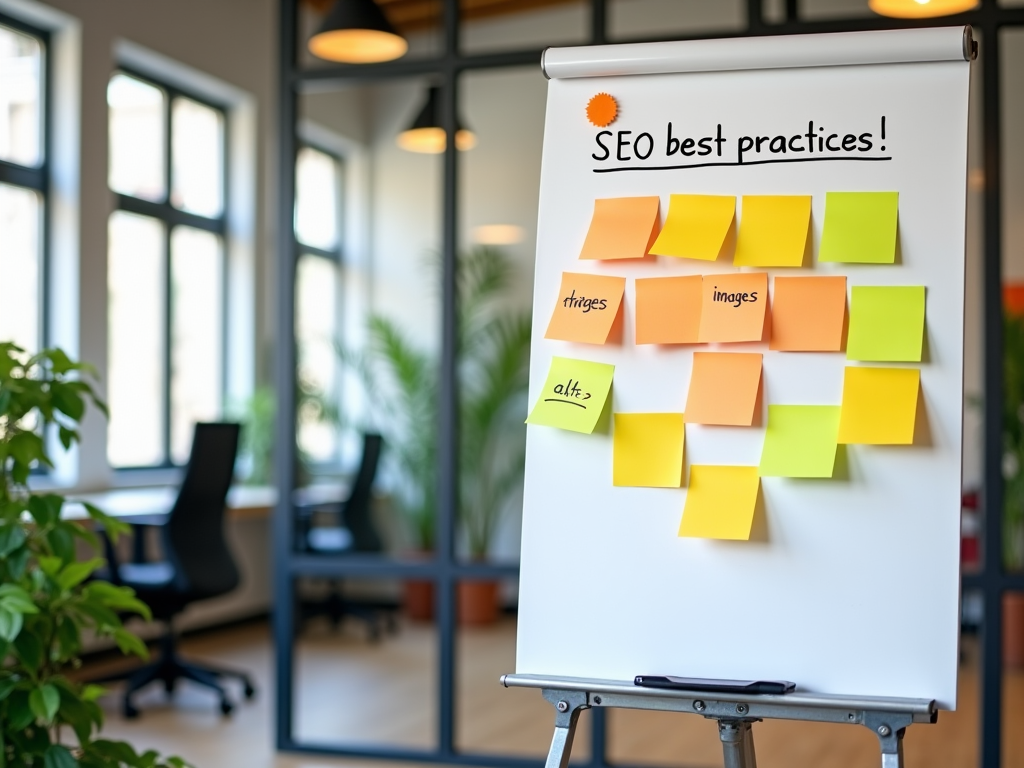Creating an SEO-friendly website layout is crucial for enhancing your site’s visibility on search engines. By structuring your website with SEO in mind, you improve user experience and increase the chance of ranking higher in search engine results pages (SERPs). In this article, we will explore practical strategies to craft an effective, SEO-friendly design, ensuring your site is easily accessible and optimized for search engines.
Understanding the Importance of SEO in Web Design

An effective website design is not just visually appealing but optimized for search engines. SEO-friendly website layouts are crucial because they guarantee that search engines can easily crawl and index your site. A well-designed layout improves user interaction, decreases bounce rates, and increases dwell time, making it more likely to achieve higher rankings in SERPs. Moreover, it communicates your brand’s credibility and reliability, fostering trust with your audience.
SEO consideration in web design impacts various aspects such as site structure, load time, mobile responsiveness, and navigation. Each component plays a significant role in how search engines interpret and rank your website. Addressing these elements ensures your site performs optimally across all platforms and devices, catering to both users and search engines alike.
Structuring Your Website for Optimal SEO

The structure of your website determines how information is organized and accessed. An SEO-friendly structure should have a logical hierarchy, making it easy for both users and search engines to navigate. A well-structured site enhances the accessibility of your content and gives search engines context about the importance of each page. To optimize your website’s structure, consider the following:
- Use a clean and organized navigation menu to clearly connect users to major sections of your site.
- Implement breadcrumbs to improve navigation and provide context about the user’s location within your website.
- Create an XML sitemap to aid search engines in indexing your pages effectively.
By adopting these measures, you establish a clear, consistent layout that improves the usability and searchability of your site.
User experience (UX) directly influences your site’s SEO performance. An engaging and intuitive UX design keeps visitors on your site longer and encourages them to explore more, improving engagement metrics that search engines consider for ranking. Focus on aspects like site speed, mobile-friendliness, and visually appealing design elements to enhance UX.
Ensure your website is mobile-responsive, as more users now browse on mobile devices. Implement responsive design techniques that adjust the site layout and content based on the device being used. Additionally, prioritize fast loading times by optimizing images, reducing server response time, and minimizing HTML/CSS/JavaScript code.
Incorporating SEO Best Practices in Design Elements
To create an effective SEO-friendly website layout, it’s essential to incorporate SEO best practices in your design elements. This involves optimizing on-page elements like headings, images, and URLs for improved search engine visibility. By doing so, you ensure that your site not only attracts users but also provides the necessary signals to search engines for better indexing.
Adopt these best practices to enhance your site’s SEO:
- Use descriptive and keyword-rich titles and meta descriptions for each page.
- Optimize images with descriptive filenames and alt texts.
- Utilize clean and keyword-friendly URLs to reflect page content.
- Implement proper heading hierarchy (H1, H2, H3, etc.) to structure content effectively.
By combining these elements into your design, you create a seamless and optimized experience for both users and search engines.
Ensuring Technical SEO Compatibility
Technical SEO is a critical aspect of designing an SEO-friendly website layout. It ensures your site is set up to be easily crawled and indexed by search engines while adhering to technical standards. Technical SEO aspects include ensuring a secure (HTTPS) and mobile-friendly site, optimizing page load speeds, and using structured data markup.
Furthermore, improving site architecture with clear URL structures, removing duplicate content, and creating user-friendly redirects contribute to better SEO performance. Staying updated with the latest technical SEO best practices ensures your website remains compatible and competitive in search engine rankings.
Итог
Designing an SEO-friendly website layout requires a holistic approach that integrates visual appeal and technical optimization. By understanding and implementing SEO best practices in your design process, you create a robust foundation that enhances your site’s visibility and usability. From organizing site structure and improving UX to incorporating technical SEO, these practices ensure your website attracts more visitors and achieves higher search engine rankings.
Часто задаваемые вопросы
1. What is an SEO-friendly website layout?
An SEO-friendly website layout is designed with search engines in mind, ensuring that content is structured in a way that makes it easy for search engines to crawl and index. This improves the site’s visibility and ranking potential in search engine results.
2. How does site structure impact SEO?
Site structure affects SEO by influencing how easily search engines can index your pages and how users navigate your site. A well-organized structure helps distribute link equity, provides clear navigation paths, and enhances user experience, all contributing to improved SEO performance.
3. Why is mobile responsiveness important for SEO?
Mobile responsiveness is crucial for SEO because a significant portion of web traffic comes from mobile devices. A mobile-responsive site provides a seamless experience across different devices, reducing bounce rates and improving engagement metrics that influence search engine rankings.
4. What elements should be prioritized for technical SEO?
Key elements for technical SEO include ensuring your website is mobile-friendly, has fast page load speeds, and uses HTTPS for security. Structured data, sitemap optimization, and fixing crawl errors are also important for maintaining technical SEO standards.
5. How can I optimize images for better SEO?
To optimize images for SEO, use descriptive filenames and alt text that include relevant keywords. Compress images to reduce file size and improve load time, and ensure images are compatible with different devices by using responsive formats.
